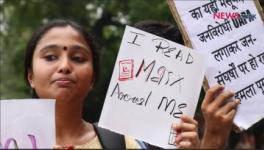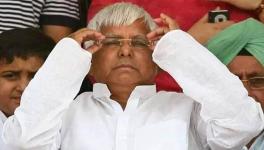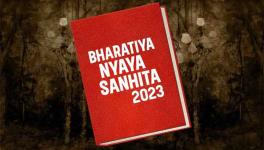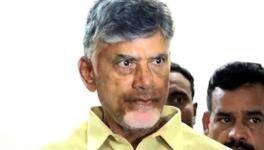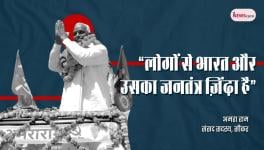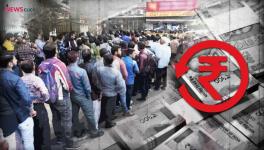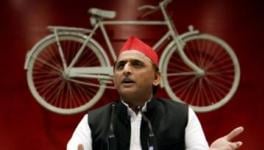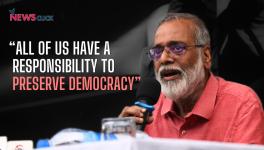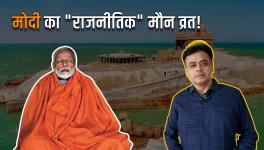CMP: A Pre-requisite for INDIA Bloc’s Collective Opposition
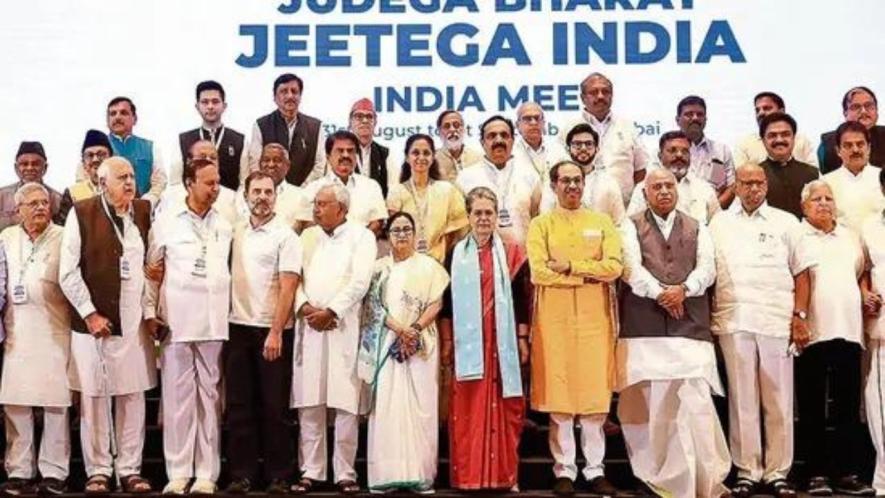
Image Courtesy: PTI
The 18th Lok Sabha Election 2024 has brought a history defining democratic verdict delivered by 63.7 crore voters, i.e., with 65.8% turned out of 96.8 crore of registered electors, representing 142 crore Indian population. Through the means of electoral franchise, India’s common people have overwhelmingly dismayed the decade-long decay in the Constitution-bound institutions, federalist cooperation, religious fraternity, not to mention the economic wellbeing of the majority of citizens.
This election has not only arrested the Bharatiya Janata Party’s (BJP) decade-long journey against constitutional ideals, but it’s an equally clear mandate to the Indian National Developmental Inclusive Alliance (INDIA) — initially an alliance of 26 political parties — to take responsibility in the opposition benches of the Lok Sabha from the voices from every section of the society they represent.
These 63.7 crore ‘common people’ — not just a rhetorical conjecture — have sent an electoral mandate by dethroning the majoritarian-communal BJP by forcing it to run a coalition government, and indirectly, distributing a greater number — currently at 237 vis-à-vis 142 MPs in 2023 — of parliamentarians from the INDIA bloc to occupy the opposition benches.
Therefore, this is a mandate not only to check the Modi 3.0 regime, which might run a de facto divinely-formed cult-infested modus operandi, but more importantly, how the INDIA bloc positioned itself as collective opposition reciprocating the electoral mandates – as 63% electorate has not voted for BJP – of the common people and expectations of progressive civil society who played a vanguard role to fight BJP.
Now the question is whether the INDIA bloc acknowledges this mandate with due responsibilities of their engagement inside and outside Parliament. Its initial ‘appropriate steps at the appropriate time’ policy certainly gives hope of collective opposition. Hope INDIA’s ‘waiting’ period is not for too long and it would not ‘watching' as mere political spectators!
The obvious and legitimate fact is that the political parties within the INDIA bloc have varied historical origins, convictions, political priorities and compulsions, ideological positions, class and caste interests, regional to national aspirations, organisational size, selection and representation of leaderships, decision-making processes, short-term populism to long-run reformist agenda etc. In this context, the importance of a Common Minimum Programme (CMP) for the INDIA bloc is inescapably essential for a consensus-based collective oppositional role inside and outside of Parliament engagement, debate, and struggles.
Presumably, the political strategies available to the INDIA bloc are many — can well be in conflict with one another— given their diverse constituencies and contingencies they serve. Therefore, without a common consensus — say, a CMP — on priorities of issues and policies with specified timelines, it would be not only be difficult to effectively operate as oppositional unity, but a breach of the historic mandate of the common people.
A CMP must be, therefore, a pre-requisite strategy, for the INDIA bloc to function its collective oppositional role to demand policies on priorities through direct and indirect pressure on the Modi-3.0 government and its coalition regional partners.
Notwithstanding, an ideal list of priorities of issues and policies that the CMP should be built upon certainly demand a greater deliberation and time, the following could well be a starting point for the INDIA bloc to delve upon.
Redefining the Nationalism:
The BJP’s rule of ‘nationalism’ has been made synonymous to promoting private interests to own, monetise, trade, and control every important ‘public/merit goods’, spaces, and priorities on which any nation is built upon — the health, education, agriculture, food, pharmaceuticals, banking, telecommunications, forests, mines, roads, seaports, railways, defence, airports, and even the socio-economic survey data, etc. — have been touched, if not completely handed over. Theoretically, most of these goods and services with presences of ‘externalities’, cannot be best served by the market.
Unsurprisingly therefore, the common people’ lives, livelihoods, mobility, social security etc. of their day-to-day, perhaps pay cheque to pay cheque, existence have increasingly been costly and uncertain as these sectors have been overtly relegated in the whims of the private players. The INDIA bloc could, therefore, redefine their rule of nationalism by restoring the national assets from the private hands to the ownership of public/government – at least majority share with decision making power – essentially on the ‘public goods’ and/or ‘merit goods’ sectors as listed above.
Extending Right-Based Welfare Programmes
Extending the widely-recognised and empowering of right-based welfare programmes, such as, right to food, education, employment, forest, and information implemented by the United Progressive Alliance I (UPA I), the INDIA bloc should not only strengthening these programmes, but demand a second stage of generation-defining interventions, such as right to nutrition, childcare, healthcare, medicine, water, transport, debt-free tertiary education, remunerative small savings, old-age pension, so on.
Of course, all these rights-based welfare programmes demand that the INDIA bloc engage in a thorough consultation with the progressive civil society working in these fields to promise these as potential laws for their future enactment, if the INDIA comes to power.
Bring Back the Planning Commission:
The first institution that the Modi 1.0 dismantled after coming to power in 2014 was the Planning Commission — a pre-eminent and widely accepted post-Independence institution of quinquennial national planning — successor of the National Planning Committee which was planned by none other than but Netaji Subhas Chandra Bose and Pandit Jawaharlal Nehru being its first Chairman in 1938.
The absence of the Planning Commission has reduced, if not completely abandoned, the much needed consultation with the Indian states and civil society to prioritise policies of short-run to long-run importance of national development. The quinquennial national planning has been replaced into a propaganda of myopic ‘Vikshit Bharat’ vision only to celebrate the centenary of India’s independence in 2047. It is, therefore, a first step for the INDIA bloc to demand for bringing back the Planning Commission –as well as its enabling institutions – as their collective agenda to emphasise on the federal framework of national planning, finance, implementation, and evaluation.
As the Modi government has been effective to dismantle India’s globally-acclaimed timely-conducted socio-economic surveys under the MoSPI (ministry of statistics and programme implementation), it is the INDIA’s opportunity to demand for conducting all necessary surveys – the caste census is indeed important one among them – to gauge the depth and spread of the problems that the Indian society has been succumb to.
The consumption expenditure survey, employment, unemployment, disengagement, i.e., neither in education, employment, and training (NEET) survey, household savings and debt survey, post-Covid health expenditure survey, time-use survey on work, leisure, and commuting for working individuals, surveys on quality of tertiary education and students’ indebtedness etc. are just few of them.
Revisiting the Public Finance
Augmenting the provisions of the ‘public goods’ and/or ‘merit goods’ to bring universal right-based welfare inescapably needs additional public finance. How much are the requirements of public finance for these welfare programmes? Where should these additional government revenues come from? How would the government expenditure be allocated between many competing and priority areas? While we do know some conversations, for example, a 2% wealth tax and a complementing 33% inheritance tax imposed only on the top 1% population can finance five universal economic rights: to food, employment, education, healthcare, and old age pension.
Understandably the INDIA bloc might not immediately be brought into a consensus for a wealth tax or inheritance tax, because some of their political constituency have direct vested interests against such means of revenue mobilisation, nonetheless, a further consultative deliberation is essential for any welfare programmes that they collectively agree to promise.
While the claim has been to make India a developed country, the proportionate direction on the government revenue – resources required for Modi’s promises – is conspicuously missing in the public eye per se. The INDIA bloc should bring, therefore, the resource mobilisation plan to reinforce their commitments to the right-based welfare programmes.
India’s tax-GDP ratio – an important macroeconomic indicator for government revenue and its capacity to finance the government expenditure, especially on the developmental programmes – is one of the lowest among its BRICS (Brazil, Russia, India, China, South Africa) counterparts, let alone the levels of developed economies.
In 2023, while India’s government revenue stood at 20.2% of its GDP, other major economies of the BRICS, such as, Brazil, Russia, South Africa, and China, have revenue at 39%, 34.5%, 27%, and 26.8% of their respective GDPs. A 6.6 percentage points difference in government revenue that India had vis-à-vis China explains much of the divergence in the developmental trajectories between India and China.
What does this apparent 6.6 percentage point difference in government revenue to GDP ratio mean to capacity of public finance in developmental programmes for India? The provisional estimates presenting India’s GDP at current prices, available for 2023-24, stood at ₹ 295 lakh crore. An additional 1 percentage point increase in tax-GDP ratio means an additional government revenue of ₹ 2.95 lakh crore per year.
A staged and successive increase in 6.6 percentage points increase in tax-GDP ratio, say in five years, means about ₹ 19.5 lakh crore of additional government revenue per year that India should ideally have, at current level of GDP, to stand in comparison with the developmental paradigm of China.
The INDIA bloc cannot, therefore, look into the areas of revenue generation seriously to bring any effective and sustainable change in the right-based welfare programmes. A list of welfare promises only for populist politics, with a stagnant provision of public finance, is nothing but the neoliberal populism that the Indian states have been experiencing for quite some time now.
Organising a Shadow Cabinet
All of the above-mentioned lists of agenda building require a systematic, time-bound, sustained strategies undertaken both inside and outside Parliament among the INDIA bloc political parties. In these endeavours, the opposition could begin by forming a shadow cabinet distributed across its coalition partners. The shadow cabinet would take the responsibilities for effective vigilance and bargain on policies that their respective official ministries undertake, and make them accountable to the parliament, the public, and the Constitution.
This is the reason why, one of the INDIA bloc’s strategies could be to form a shadow cabinet distributed across political parties, with the necessary support from the civil society with specialised areas of interests and experiences. The formal and informal practices of the shadow cabinet is indeed a well- known parliamentary strategy of the opposition benches in many countries such as the UK, France, Australia etc.
There can be, of course, initial focus only on selected ministries of important/priority shadow cabinet vis-a-vis the official cabinet/ministries. This shadow cabinet would also be responsible for bringing their observations and interventions in the public discourse. The ministry-specific bargains and interventions would effectively enrich the shadow cabinet’s knowledge and experiences to build INDIA’s collective strategies not only in opposition benches of Parliament, but for consolidating future elections agenda and coalition dynamics, and a possible INDIA bloc government in future.
While the common people will be again called upon for their franchise in 2029 — presumably the NDA under Modi-3.0 government sustain a full term (2024-29) in office — to decide their future government, the Opposition INDIA bloc should be well prepared with their future agenda, and, if possible, projecting the ministries from the shadow cabinet, if an INDIA bloc coalition government is formed at any time, sooner or later, replacing the Modi-3.0 regime.
All these are certainly easier said than done, as Indian politics is full of complexities with uncertainties, vested interests, idiosyncratic leaderships, therefore, would determine the form, functionings, sustenance of not only the Modi-3 coalition government and but the opposition INDIA bloc, too. Therefore, wait and watch for the political match!
Amit Sadhukhan teaches economics at Tata Institute of Social Sciences, Hyderabad Campus. The views are personal.
Get the latest reports & analysis with people's perspective on Protests, movements & deep analytical videos, discussions of the current affairs in your Telegram app. Subscribe to NewsClick's Telegram channel & get Real-Time updates on stories, as they get published on our website.









